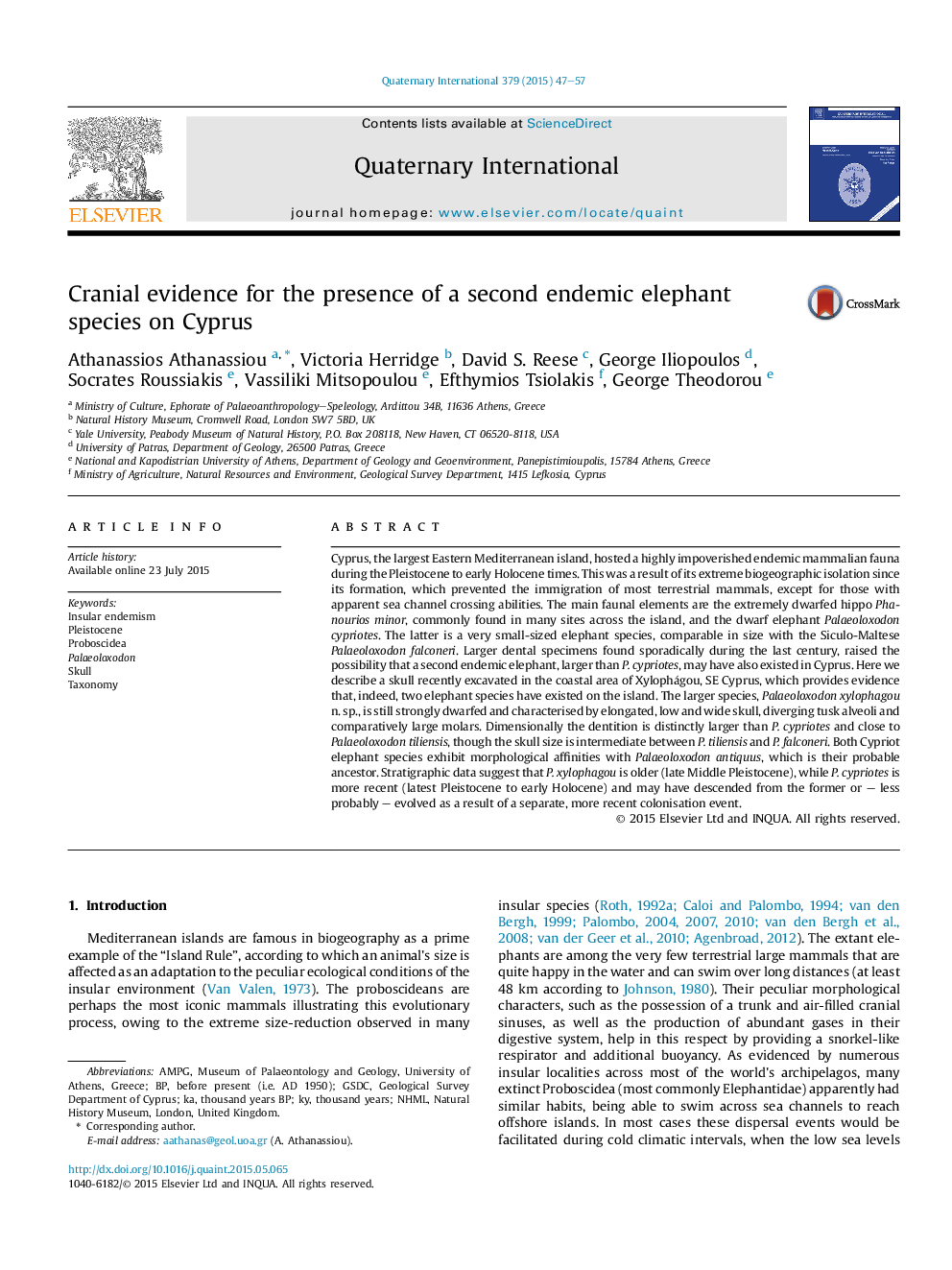| کد مقاله | کد نشریه | سال انتشار | مقاله انگلیسی | نسخه تمام متن |
|---|---|---|---|---|
| 1040648 | 1484118 | 2015 | 11 صفحه PDF | دانلود رایگان |
Cyprus, the largest Eastern Mediterranean island, hosted a highly impoverished endemic mammalian fauna during the Pleistocene to early Holocene times. This was a result of its extreme biogeographic isolation since its formation, which prevented the immigration of most terrestrial mammals, except for those with apparent sea channel crossing abilities. The main faunal elements are the extremely dwarfed hippo Phanourios minor, commonly found in many sites across the island, and the dwarf elephant Palaeoloxodon cypriotes. The latter is a very small-sized elephant species, comparable in size with the Siculo-Maltese Palaeoloxodon falconeri. Larger dental specimens found sporadically during the last century, raised the possibility that a second endemic elephant, larger than P. cypriotes, may have also existed in Cyprus. Here we describe a skull recently excavated in the coastal area of Xylophágou, SE Cyprus, which provides evidence that, indeed, two elephant species have existed on the island. The larger species, Palaeoloxodon xylophagou n. sp., is still strongly dwarfed and characterised by elongated, low and wide skull, diverging tusk alveoli and comparatively large molars. Dimensionally the dentition is distinctly larger than P. cypriotes and close to Palaeoloxodon tiliensis, though the skull size is intermediate between P. tiliensis and P. falconeri. Both Cypriot elephant species exhibit morphological affinities with Palaeoloxodon antiquus, which is their probable ancestor. Stratigraphic data suggest that P. xylophagou is older (late Middle Pleistocene), while P. cypriotes is more recent (latest Pleistocene to early Holocene) and may have descended from the former or – less probably – evolved as a result of a separate, more recent colonisation event.
Journal: Quaternary International - Volume 379, 27 August 2015, Pages 47–57
